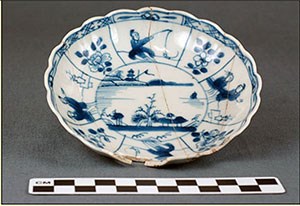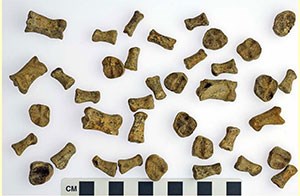|
During the excavation, archeologists identified18th and 19th century foundation walls, four privy pits and a wooden barrel-lined with trash pit. Approximately 27,000 artifacts were recovered during the dig of Dexter's lot. Subsequent analysis revealed that only the barrel-lined trash pit contained artifact deposits dating to Dexter's occupation. 
NPS photo What can we learn about Dexter from these artifacts? 
NPS photo
|
Last updated: February 26, 2015
